NAKS 72B-4800-FF Bedienungsanleitung
NAKS
Dunstabzugshaube
72B-4800-FF
Lies die bedienungsanleitung für NAKS 72B-4800-FF (7 Seiten) kostenlos online; sie gehört zur Kategorie Dunstabzugshaube. Dieses Handbuch wurde von 4 Personen als hilfreich bewertet und erhielt im Schnitt 4.3 Sterne aus 2.5 Bewertungen. Hast du eine Frage zu NAKS 72B-4800-FF oder möchtest du andere Nutzer dieses Produkts befragen? Stelle eine Frage
Seite 1/7

Read and Save These Instructions
NAKS Form 613158
RECEIVING AND INSPECTION
Immediately upon receipt of a shipment, carefully inspect
for damage and shortage. Turn the impeller by hand to see
that it turns freely and does not bind. If any damage and/or
shortage is detected or suspected, the carrier must be asked
to conduct an inspection. The consignee's representative
should not accept shipment without a notation on the delivery
receipt indicating items not delivered or apparent extent of
damage.
When a shipment is opened and damage is found which was
not evident externally (concealed damage), it is mandatory
that the consignee request an immediate inspection by the
carrier. Report damage to the carrier within 15 days. Failure to
report damage within the above time limit will cause rejection
of a claim.
HANDLING
When handling fans and their accessories, always use
equipment and methods that will not cause damage. Fans
should be lifted using slings and padding or spreaders to
avoid damage.
CAUTION! Always make sure that all lifting and handling
equipment and techniques conform to current safety
standards.
Avoid lifting fans in a way that will bend or distort fan parts.
Never pass slings or timbers through the orices of fan.
CAUTION! lift by the fan hood. Fans with special Do not
coatings or paints must be protected in handling to prevent
damage.
STORAGE
Fans are protected against damage during shipment. If
they cannot be installed and put into operation immediately
upon receipt certain precautions are necessary to prevent
deterioration during storage. Responsibility for integrity of
fans and accessories during storage must be assumed by the
user. The manufacturer will not be responsible for damage
during storage. These suggestions are provided solely as a
convenience to the user, who shall make his own decision as
to whether to use any or all of them.
INDOOR: The ideal storage environment for fans and
accessories is indoors, above grade, in a low humidity
atmosphere which is sealed to prevent the entry of blowing
dust, rain, or snow. Temperatures should be evenly maintained
at between 70°F and 105°F (wide temperature swings may
cause condensation and "sweating" of metal parts). Windows
should be covered to prevent temperature variations caused
by sunlight. Provide thermometers and humidity indicators at
several points and maintain the atmosphere at 40% relative
humidity, or lower.
It may be necessary to use trays of renewable desiccant or
portable dehumidier to remove moisture from the air in the
storage enclosure.
Thermostatically controlled portable heaters (vented to
outdoors) may be required to maintain even temperatures
inside the enclosure.
CAUTION! Provide re extinguishers, or re alarms, or
telephone to protect building and equipment against re
damage. Be sure that building and storage practices meet all
local, state and federal re and safety codes.
The following fans or accessories must be stored indoors, in
a clean dry atmosphere:
a. Propeller Wall Fans not in Wall Housings.
b. Any fan which is protected by a cardboard carton.
c Motors dismounted from fans.
d. Spare wheels or propellers.
e. The belts, sheaves, bushings and other parts when
not mounted on fan.
f. Boxes, bags or cartons of hardware.
g. Curbs
h. Dampers
Remove any accumulations of dirt, water, ice or snow and
wipe dry before moving indoor storage. Allow cold parts to
reach room temperature to avoid “sweating” of metal parts.
Open boxes or cartons. Remove any accumulated moisture;
if necessary use portable electric heaters to dry parts and
packages. Leave coverings loose to permit air circulation and
to permit periodic inspection.
Rotate wheels or propellers by hand to distribute bearing
grease over the entire bearing surfaces.
Store at least 3 ½” off the oor on wooden blocks covered
with moisture proof paper or polyethylene sheathing. Provide
aisles between parts and along all walls, to permit air
circulation and space for inspection.
INSTALLATION & MAINTENANCE INSTRUCTIONS
Belt Drive Exhaust Fans
_________________________________________________________________________________________________________________
2017 © North American Kitchen Solutions
172 Reaser Court
Elyria, OH 44035
www.naksinc.com
Page 1 of 7

OUTDOOR: Fans designed for outdoor use may be stored
outdoors, if absolutely necessary. The storage area should
be reasonably level and drained or ditched to prevent
accumulation of water. Fencing and lighting for security are
desirable. Roads or aisles for portable cranes and hauling
equipment are needed. Consider the use of drift fencing to
minimize accumulation of blowing snow or dirt.
The following fans may be stored outdoors, if dry indoor
storage space is not available:
a. Fans intended for outdoor use that are crated in
wood.
b. Wall fans where installed in wall housings.
All fans must be supported on wooden blocks or timbers
above water or normal snow levels. Provide enough blocking
to prevent settling into soft ground. Fans should be set in
place using the directional arrow markings on the crate as a
guide.
Locate pieces far enough apart to permit air circulation,
sunlight, and space for periodic inspection. Place all parts
on their supports so that rain water will run off, or to minimize
water accumulation. Do not cover parts with plastic lm or
tarps - these cause condensation of moisture from the air
passing through heating and cooling cycles.
Fan wheels and propellers should be blocked to prevent
spinning caused by strong winds.
INSPECTION AND MAINTENANCE
DURING STORAGE
Inspect fans and accessories at least once per month, while
in storage. Log results of inspection and maintenance
performed. A typical log entry should include the following:
a. Date
b. Inspector’s Name
c. Name of Fan
d. Location
e. Condition of Paint or Coating
f. Is moisture present?
g. Is dirt accumulated?
h. Corrective steps taken?
If moisture or dirt accumulations are found on parts, the
source should be located and eliminated. Fans should be
rotated at each inspection by hand ten to fteen revolutions to
redistribute the motor and bearing lubricant.
If paint deterioration begins, consideration should be given
to touch-up or repainting. Fans with special coatings may
require special techniques for touch-up or repair.
Machined parts coated with rust preventive should be restored
to good condition promptly if signs of rust occur. The most
critical items are pulleys, shafts and bearing locking collars.
At the rst sign of rusting on any of the above parts, remove
the original rust preventive coating with petroleum solvent and
clean lint-free cloths. Polish any remaining rust from surfaces
with crocus cloth or ne emery paper and oil. Do not destroy
the continuity of the surfaces. Wipe clean with lint-free cloths
and recoat surfaces evenly and thoroughly with Tectly 506
(Ashland Oil Company) or equal. For hard to reach internal
surfaces or for occasional use, consider using Tectly 511M
Rust Preventive or WD40 or equal.
REMOVING FROM STORAGE
As fans are removed from storage to be installed in their nal
location, they should be protected and maintained in similar
fashion, until the fan equipment goes into operation.
INSTALLATION
1. CAUTION! This unit has rotating parts and safety
precautions should be exercised during installation,
operation and maintenance.
2. WARNING! use in hazardous environments Do not
where the fan's electrical system could provide ignition
to combustible or ammable materials, unless the unit is
specically built for hazardous environments.
3. WARNING! If gases, other than clean air, are to be
exhausted using the fan, then the user bears the
responsibility of determining that the fan is appropriate
and safe for the application.
4. COMMERCIAL KITCHEN EXHAUST APPLICATIONS:
Ventilators should be installed in accordance with the
requirements of the National Fire Protection Association
Bulletin NFPA96 “Vapor Removal From Cooking
Equipment” taking specic note of the following:
(a) Ducts terminating into the base of an up-discharge
exhaust fan shall be constructed of carbon steel not
less than 16 MSG (1.6 mm) and extend a minimum
of 18" (457 mm) above the roof surface.
(b) Air velocity through the duct shall not be less than
1500 FPM (7.620 m/s).
(c) A minimum of 40" (1016 mm) clearance shall be
maintained between the exhaust discharge and
the roof surface. (To comply sizes 80 through 300
require 18" [457 mm] roof curb.)
(d) Fan Discharge shall be a minimum of 10 feet from
the fresh air intake.
5. GREASE TROUGH ACCESSORY: A container to collect
residue grease should be located under the grease drain
on the ventilator to prevent accumulation of grease on the
roof surface. An accessory grease trough that attaches
to the curb is available from the manufacturer at extra
cost. Containers should be serviced at regular intervals
to prevent overow. Curb hinges are also available as an
optional accessory. Installation instructions are shipped
with the accessories.
_________________________________________________________________________________________________________________
2017 © North American Kitchen Solutions
172 Reaser Court
Elyria, OH 44035
www.naksinc.com
Page 2 of 7

_________________________________________________________________________________________________________________
2017 © North American Kitchen Solutions
172 Reaser Court
Elyria, OH 44035
www.naksinc.com
Page 3 of 7
6. FAN INSTALLATION:
(a) WALL MOUNT: If wall mounted, provide an opening
sufcient for enclosing the curb cap. Securely fasten
to the wall through the cap. Fan breather tube
should be on the side of the fan at a 90° angle from
vertical. A wall mounting adapter option is available
from the manufacturer. On wall mounted models the
wall bracket is shipped with the fan.
(b) ROOF MOUNT: Roof exhausters should be mount-
ed on a roof curb suitable for the purpose, either
eld fabricated or prefab type. Prefab type curbs
are available as an accessory at extra cost from
the manufacturer. The fan should rest on the curb
as level as possible. When curb is not level (slightly
pitched on at roofs) the down spout drain tting
should be located on the lowest side of the curb.
Securely fasten the exhauster to the curb using a
minimum of 4 lag bolts - one centered each side.
7. CAUTION! Guards must be installed when the fan is
within reach of personnel or within eight (8) feet (2.5 m) of
working level or when deemed advisable for safety.
8. IMPELLER-ORIFICE ADJUSTMENT: Turn centrifugal
impeller by hand to make sure it rotates freely. If the
impeller hits the orice, adjust as follows:
For Duplex Split Pillow Block Bearings, three dimensional
adjustment is provided. loosen all bolts at once. Do not
Proceed with adjustments in one direction at a time to
minimize difculty. Horizontal movement for adjustment
is allowed by loosening the two bolts connecting the drive
brace (4) to the top and bottom ange of the drive base
(3) and by loosening the four bolts, two at each end, of
the drive base (3). Horizontal movement in the other
direction is allowed by loosening the four bolts securing
the bearing caps (6) to the drive base (3). After loosening
the appropriate bolts, the impeller can be repositioned to
insure that it does not strike the orice. Vertical adjustment
is allowed by loosening the set screw on the impeller hub
which allows the impeller to be moved vertically. Make
sure all bolts are securely tightened before applying
electrical power.
9. MOTOR - BELT TENSION ADJUSTMENT: The motor is
mounted directly to the slots on the Drive Base using the
four motor mount bolts. Belt tensioning is accomplished
by sliding the motor away from the fan pulley and then
tightening the motor mount bolts and nuts. Some sizes
use motor rails for certain motors.
Belt should depress its width when pressed rmly inward
at midway point between the pulleys.
10. CAUTION! Before proceeding, make sure electrical
service to fan is locked in the “OFF” position. Run wires
through the internal wiring post to the motor (or to the
disconnect switch). (Restaurant exhaust fans have wires
run through the wiring post to the exterior of the windband.)
11. All wiring should be in accordance with local ordinances
and the National Electric Code.
12. WARNING! Check voltage at the fan to see if it corresponds
with the motor nameplate. High or low voltage can
seriously damage the motor. Extra care should be taken
when wiring to motors since improper connections will
damage the motor and void the motor warranty.
13. WARNING! Do not operate at speeds higher than
shown in the catalog for this equipment. Apply power
momentarily and compare the impeller rotation with the
directional arrow. Operation in the wrong direction will
deliver air but may overload the motor to the extent of
blowing fuses or overload protection and could seriously
damage the motor. In the case of three phase motors, the
direction can be changed by interchanging any two of the
three motor leads. In the case of single phase motors, the
reversing instructions will appear on the wiring diagram in
the motor wiring compartment or on the motor.
MAINTENANCE
1. Under normal usage, no spare parts are expected to be
required for one year of operation. Recommended spare
parts are shown on page 5.
2. CAUTION! Before proceeding, make sure electrical
service to fan is locked in the “OFF” position.
WINDMILLING: Even when the power supply is locked
out, fans may cause injury or damage if the impeller is
subject to “windmilling” which is the turning of the impeller
and drive components due to a draft in the system. To
guard against this hazard, the impeller should be secured
to physically restrict rotational movement.
3. Units with Duplex Split Pillow Block Bearings are pre-
lubricated and do not require relubrication. Units with
pillow block bearings have grease ttings and, under
normal operating conditions, will not need relubrication for
3 to 5 years. If relubrication is required, use a grease
conforming to NLGI No. 2. Lubricating CAUTION!
bearings with a high pressure gun can blow bearing seals
and overll the bearing with grease. This condition can
result in excessive churning and overheating. For normal
operating conditions it is standard practice to ll 30% of
the bearing void with grease. Do not over lubricate.
4. Motor bearings are pre-lubricated. Consult information
printed on the motor for lubrication instructions.
5. REGULAR MAINTENANCE: Determined by the condition
of the air passing through the fan, regularly scheduled
inspection of all fan parts establishes a good maintenance
routine. When the air is clean, maintenance can be as
infrequent as once a year. When air is contaminated with
grease vapors from cooking operations, maintenance
may be required as often as once a week. Regular
maintenance should include inspection and cleaning of all
fan parts to remove all grease and other foreign particles
from the entire impeller surface including blades and front
and back plates.
WARNING! Care must be taken when cleaning the
impeller to remove grease and other foreign particles.
Damage to the impeller can occur if it is hit or if pressure
is applied causing the impeller to be distorted. Either case
can cause serious vibration and damage to the fan.
Produktspezifikationen
| Marke: | NAKS |
| Kategorie: | Dunstabzugshaube |
| Modell: | 72B-4800-FF |
Brauchst du Hilfe?
Wenn Sie Hilfe mit NAKS 72B-4800-FF benötigen, stellen Sie unten eine Frage und andere Benutzer werden Ihnen antworten
Bedienungsanleitung Dunstabzugshaube NAKS
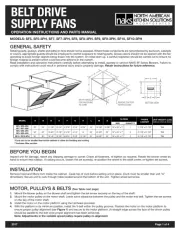
21 August 2025
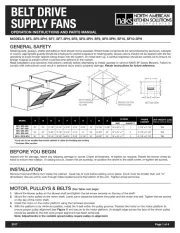
21 August 2025
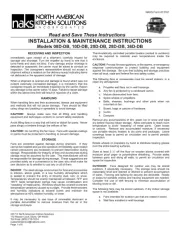
21 August 2025
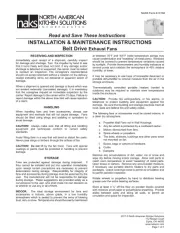
20 August 2025

16 Juli 2025
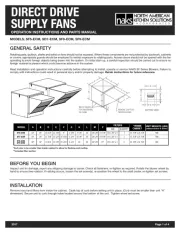
15 Juli 2025
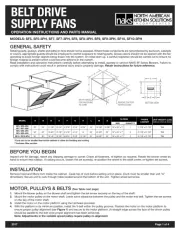
14 Juli 2025
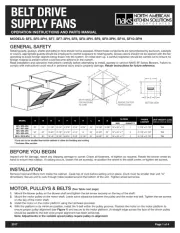
14 Juli 2025

14 Juli 2025
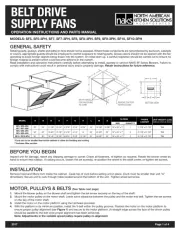
14 Juli 2025
Bedienungsanleitung Dunstabzugshaube
- BlueStar
- ABK
- PKM
- Candy
- Ciarra
- Remko
- Zelmer
- Arctic Cooling
- UPO
- Mayer
- Bellini
- Thor
- James
- Everdure
- Comfee
Neueste Bedienungsanleitung für -Kategorien-
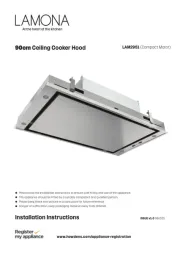
21 August 2025

21 August 2025
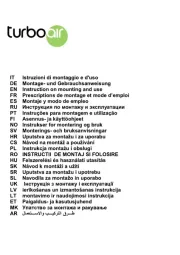
20 August 2025
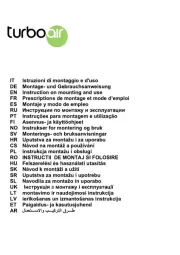
20 August 2025
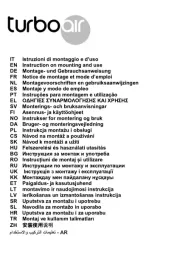
20 August 2025
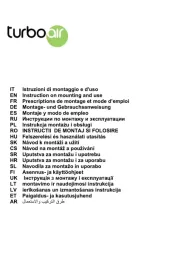
20 August 2025
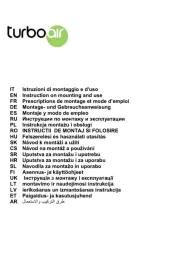
20 August 2025
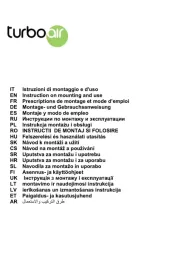
20 August 2025
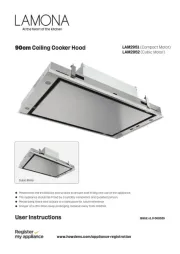
20 August 2025
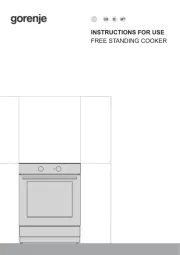
20 August 2025